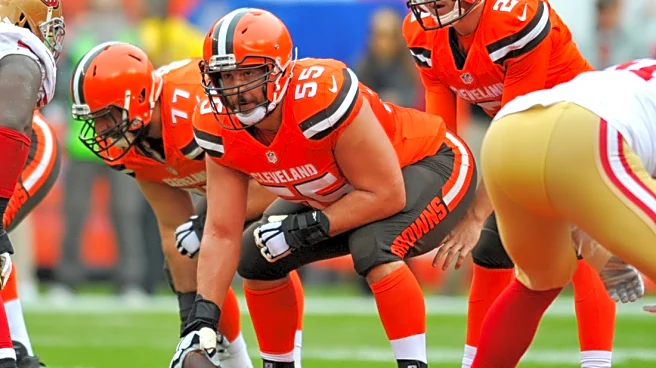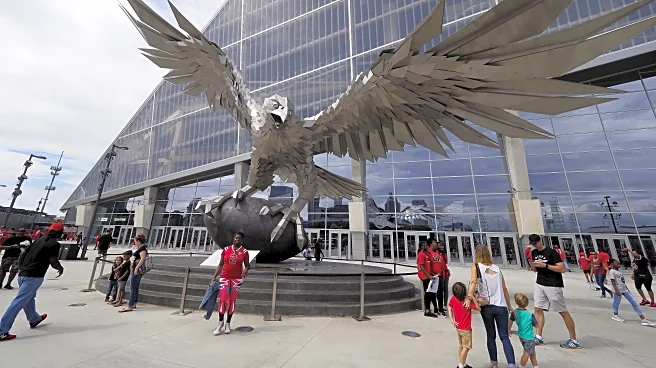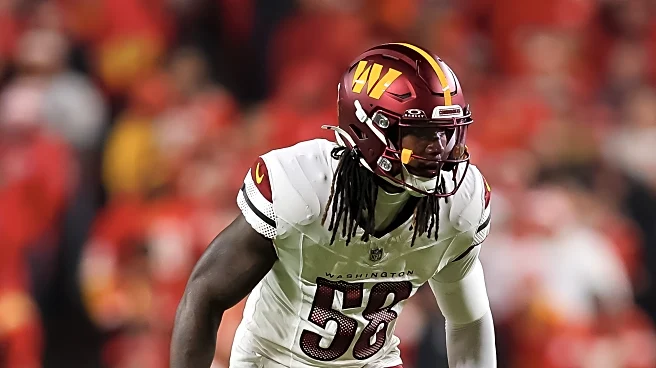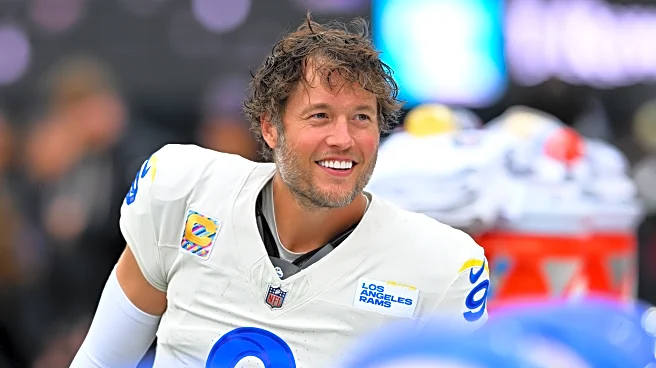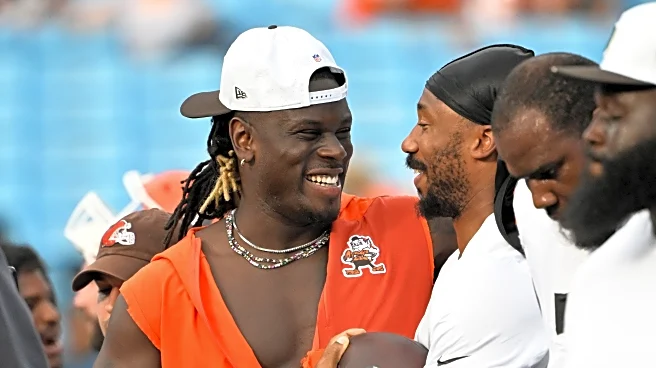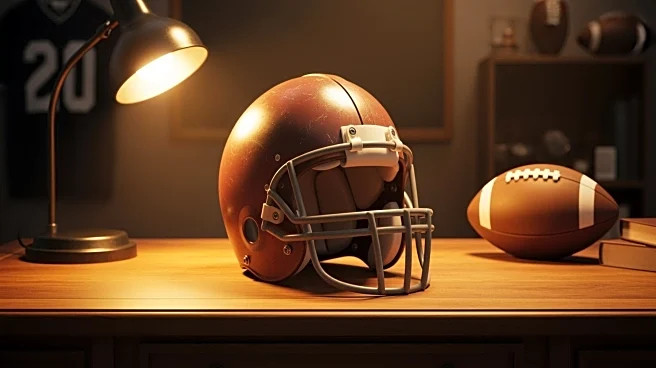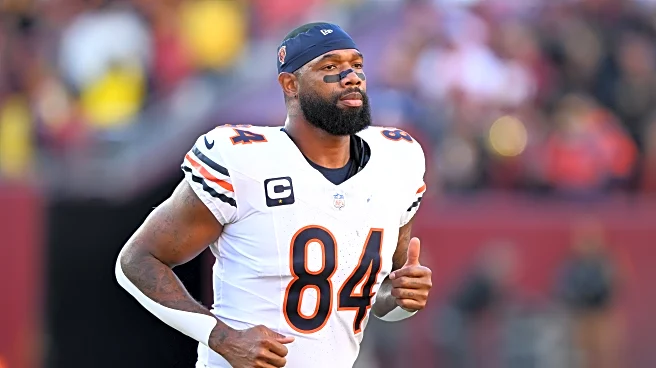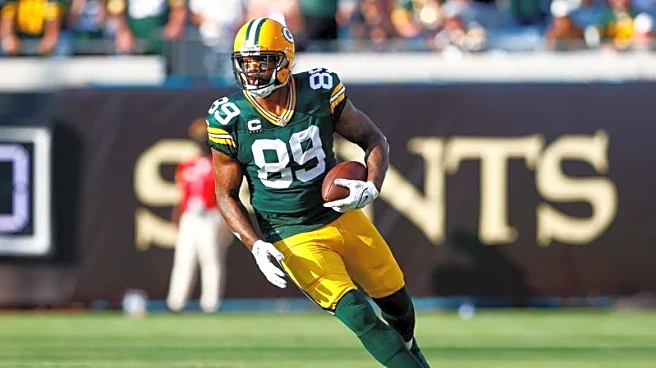Things happen every game in the game of American Football that we don’t even think about.
Like, how did the goalposts go from an “H” to the way they are constructed now? Where did hash marks come from?
Why is it four downs to make 10 yards? How did the “quarterback” get its name? What exactly does the position “safety” imply? Why is it called a “touchdown”? Where did the moniker “coach” originate? How come the end zone is not part of the field of play, yet points are scored in this area?
RELATED: EVOLUTION OF GOAL POSTS
Things just evolve when it is a brand-new game. American Football began as a new sport, with new rules and borrowing lots of details from other sports. American Football came from the sport of rugby. Rugby evolved from the sport of soccer, which has always been called “football” and still is.
When rugby began, it took some of the techniques, terminology, rules, field elements, equipment, and player standards from soccer and customized the game into something new and different, yet very familiar to its father sport.
Then, when American Football was first invented, the exact same thing happened. That game was a carbon copy of rugby except for some changes. It used terminology and aspects from both sports. Things such as punt, interception, tackle, kickoff, halftime, goal line, goal post, cross bar, among others, are all soccer terms.

But unlike rugby, American Football sets up a line of scrimmage, with a set number of “downs”1 to make so much yardage, then a new set of downs is achieved, and so on. The sport gave one team possession even if it failed on the previous down.
American Football has 11 men on the field because soccer does. American Football keeps the official time on the wrist of a referee on the field because soccer does. American Football has a kickoff to start the game and after every score, because soccer does. Up until 1950, American Football only allowed three substitutes per game because that was what soccer did.
Even positions that players are called have evolved from both soccer and rugby.
Soccer has positions labeled fullback and halfback. Rugby uses centre, flanker, halfback, and fullback. All have been used in American Football at some point.
In today’s game, each offensive play begins with the snap from the center. He hikes the ball between his legs to the quarterback, and then the play begins.
A few discrepancies with this position
For one, the word “center” does not appear in the NFL rules handbook. That is what we all call the position, but the league does not. It never has. The “center” is what the position is called in college football, because he is located in the center of the line.2
In the NFL, this position is labeled “the snapper.” That explains why, on a PAT or field goal attempt, out trots “the long snapper” to hike the ball back to the place holder. Same position on the field, just a more advanced role in his job description.

Actually, the “snapper” and the “long snapper” can be the same guy. In the NFL, it is typically two different players; however, in college and at the high school level, the center often doubles as the long snapper.
Each play in American Football begins the same way. The snapper or the long snapper hikes the ball back to a player in the backfield. But the snapper’s action has a name. Everyone refers to this as a “snap,” or a “hike,” or a “snapback,” but it is officially called “a backwards pass.”3
The very first action on every play in American Football is a pass, which is a soccer term that means one player gets the ball to another. Now, there are many variations of the snapper’s backwards pass.
The snapper may hand, throw, or even roll the ball to the other player. The snap must be a quick and continuous movement of the ball by one or both hands of the snapper, and the ball must leave the snapper’s hands.

One odd rule regards the snapper. He is the only player who is allowed to be clearly on the line of scrimmage.4 All other players must be behind the line of scrimmage and considered “onside” when the ball is put in play.
We are all used to seeing the snapper hike the ball between his legs. That is the norm. And what is meant by “the norm” is that there are numerous other methods in which this first pass can be accomplished to get the play in motion. But the ball does not have to be put into play by first going through the snapper’s legs.5 Snapping the ball between the legs of the snapper is just one of many methods.
The original name for the snapper was “the snap-back.” The first method the snap-back used was to roll the ball backwards with his hand to a player6 called “the quarter-back” who was stationed a quarter of the way back into the backfield towards the halfway back, or halfback, and the back situated fully back, or fullback.
Defenders would sometimes push the snap-back, who would inadvertently kick the ball and cause a disruption of the exchange. So, the next method was for the snap-back to kick the ball backwards to the quarter. That action was called “heeling” and was developed from the sport of rugby.

The snapper would stand over the ball, with the football lying on the ground side-to-side instead of point-to-point. The snapper then placed one foot in front of the ball, then with his heel, he kicked or pushed the ball backwards.7 At the time, this position was often referred to by players as “the heeler.”
Back in the day, the ball used was still a rugby ball, so it was shaped like a watermelon and close to being round. With a heeling pass, the ball would roll really well as if it were completely round. However, since those early days, the football has been reshaped four times to make it more aerodynamic, rather than easier to roll. The shape is officially called a “prolate spheroid.”8 So, a heeling pass today isn’t feasible because the rolling action would not be smooth, but instead become unpredictable.
Plus, as soon as the snapper pushed the football backwards, a savvy defender could shove the snapper in an attempt to have him bump the ball during the backwards roll and cause a fumble or disruption of the ball’s path. To counteract this, two players were stationed on each side of the center to “guard” the center’s heeling action towards a successful path to the quarterback. Early formations often had the guards turned at 45-degree angles, facing the center to help protect him.9 Today, this is why these same two players are called “offensive guards.”
The second method of the snapper’s pass is the “sidewinder.” In this motion, the snapper lifts the ball to one side or the other of his body, then hands the football to the quarterback. This was a standard practice at one time, but the problem was that a savvy defensive lineman could anticipate the snap, then reach out and slap the ball out of the center’s hand during the exchange, thus causing a fumble.
The third technique from the snapper is an actual overhand pass. The center stands up with the ball, then turns his body sideways and tosses a spiral pass to whomever, like a quarterback would do, as long as the pass is in a backwards motion.

The fourth fashion is the traditional between-the-legs snap utilized by every team at every level. But it wasn’t always used.
The Father of the game of American Football is Walter Camp. He made up rules and regulations to change the game of rugby into this new sport. He instituted downs, possession, a line to gain another set of downs, and came up with new terms such as touchdown plus a scoring protocol.
Both soccer and rugby were free-flowing games in which one team was on offense until it lost control of the ball—starting play from a controlled scrimmage with one team maintaining possession of the ball allowed for the development of structured alignments and planned plays.
But at first, Camp’s new game used one of the three methods listed above for the play to get going from the snapper to the quarterback. Camp wasn’t satisfied because defenders usually disrupted the exchange. The main problem was that routinely the football was unprotected, coming from the snapper’s hand to the quarterback.
Camp just happened to be in Toronto. He attended a Canadian rules football game against Saskatchewan. The center for both teams snapped the ball between his legs. This completely protected the ball from being swatted away by a defender and was safely handled by the quarterback as each play began uninterrupted.
With this “ah-hah” moment, Camp brought this process back to his American version game, and it has been the technique used by snappers since 1891.10
However, all four methods are still legal, and at times, are used in trick plays because the defense has never seen the ball snapped any other way except between the center’s legs.
Trick plays using the snapper
The “Fumblerooski”11 is a famous trick play. It begins as the snapper sends the pass to the quarterback, like normal, who begins the play under center. Then the quarterback places the ball on the ground motionless behind the offensive guard’s leg, who just stands still. As every player runs in one direction, acting like they have possession, the guard waits for two Mississippi’s, then reaches down for the ball and takes off in the opposite direction.

In the stat line, it is ruled a fumble, with a fumble recovery by the guard, and usually followed by a touchdown.
Another trick play based on the snapper’s action is called “Wrong Ball.” It works on the youth level, and sometimes in high school. The entire premise of this play is to confuse the defense.
First, the quarterback is under center. As he gets ready to receive the snap, he looks over the center’s shoulder down at the football and then faces his coach and yells out, “Coach, they are using the wrong ball!” The coach then screams back, “Let me see it!” The center then hands the ball to the quarterback using the sidewinder motion, which is to pick up the ball and hand it over in a sideways motion.
As soon as the center picks up the ball, it is live, but the defense has never seen the sidewinder snap, and so relaxes out of their stance. Next, the quarterback casually walks toward the sideline toward his coach, parallel to the line of scrimmage, while holding the ball up in the air. Again, the defense does nothing. The center’s unconventional snap has confused them into thinking the play has not begun because the first pass did not come from underneath the center’s legs.
Banter occurs between the coach and quarterback as the player walks nonchalantly. As soon as the quarterback gets close to the sidelines, the coach instructs, “Go.” The athlete streaks down the sideline uncontested.
Extra duties
The long snapper has added value. This is a player who must toss a pass looking upside down and backwards. And there are conditions. For one, the pass must be a spiral like the ones the quarterback throws. Except this spiral isn’t tossed overhand, but accomplished with a spinning motion instead. Secondly, the backwards pass must be sent to a specific spot. Some punters like the ball to their hip, whereas others prefer it at chest level.

The pass to the place holder during a PAT attempt or a field goal is seven yards deep at most levels, and eight yards at the NFL echelon. For a pass to the punter, it is 15 yards deep. Again, with a spiral pass to a specific spot, upside down and backwards, without skipping off the turf.
The snapper in football is invaluable. As the level of competition increases, the center has new job duties other than to hike the ball between his legs to begin each play. His new roles include recognizing stunts and blitzes, and calling plays along the offensive line.
His job is to get the play’s first pass safely to the quarterback, then either block for the runner or set up in pass protection. Every single play, the snapper is engaged with a defender. Core strength and physical conditioning come into play during each game.
Because the long snapper is vulnerable to injury, and also the fact that the rules makers want field goals and PATs to be successful, certain rules now exist that the defensive unit cannot contact the long snapper until one second after the snap.12
There are two qualities that every center has: Intelligence, and they are the most organized person on the entire roster. Their vehicle is always clean, their home is never a mess, and everything has its place. These traits are in their DNA.
The game of American Football begins with the center, um, snap-back, oops….snapper.
Barry Shuck is a member of the Professional Football Researchers Association. For more information, click this link to their website: https://www.profootballresearchers.com/.
Notes:
_____________________________________________________________________________
1. Tony Collins, “The Walter Camp Myth and the Origins of American Football,” Squarespace.com, June 16, 2015
2. Bob Sproule, “That Game of Football,” Coffin Corner, Volume 4, 1982
3. NFL Rule Book, Football Operations, Rule 8, Section 7, Article 1: “Backward Pass”
4. NFL Rule Book, Football Operations, Rule 7, Section 5, Article 1 (d): “Ball in play, dead ball, scrimmage”
5. NFL Rule Book, Football Operations, Rule 7, Section 6, Article 3 (b): “Restrictions for Snapper”
6. Walter Camp, Walter Camp’s Book of College Sports, The Century Company, 1900, Chapter 5, “Foot-ball in America”
7. Football Archaeology, “It’s a snap: The line of scrimmage,” April 3, 2018
8. NFL Rule Book, Football Operations, Rule 2, Section 1: “The Ball”
9. Bob Sproule, “Snap Back vs. Scrimmage,” Coffin Corner, March 1984
10. Mark Gelbart, “The Evolution of Soccer to Rugby to Football,” Georgia Before People, 2014
11. Fred Bierman, “What Ever Happened to the Fumblerooski?”, New York Times, December 15, 2009
12. NCAA Football Rule Book, Rule 9, Article 14: “Conduct of Players”
